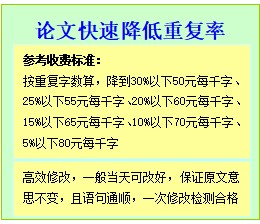XCLW36982 在动态对等理论观照下看英汉习语的翻译策略 (字数:4312)AbstractThere exist a great deal of idioms in English and Chinese, they mirror the national culture and characteristics of languages. Idioms are the cream of culture and language in human history, and they abound with rich cultural el..
|
XCLW36982 在动态对等理论观照下看英汉习语的翻译策略 (字数:4312) Abstract There exist a great deal of idioms in English and Chinese, they mirror the national culture and characteristics of languages. Idioms are the cream of culture and language in human history, and they abound with rich cultural elements about history and geography, religious beliefs and national customs different peoples. The thesis constitutes five chapters. Chapter one is the introduction. It mainly introduces the background and significance. Chapter two covers Dynamic Equivalence Theory. Chapter three compares analysis English and Chinese idioms from different aspects. It includes the definition, features, classification, culture features of English and Chinese idioms. Chapter four is the key part of the thesis. It mainly deals with the application of Dynamic Equivalence in idioms translation and the specific translation methods, it includes literal translation, free translation, combination of literal and free translation, borrowing. Chapter five is the conclusion. There exist similarities and differences in languages and culture between English and Chinese idioms; it is these differences that bring many difficulties to their translation; Dynamic Equivalence is significant in directing idioms translation, and literal translation, free translation, the combination of literal and free translation, and borrowing are the commonly-used strategies in English and Chinese idioms translation. Thus based on the Dynamic Equivalence, the thesis will make a comprehensive and systematic study about idioms translation. Through the study, it can provide some strategies for idioms translation. KEY WORDS: English and Chinese idioms Dynamic Equivalence translation strategies Contents Abstract 1 Contents 1 1. Introduction 1 2. Dynamic Equivalence Theory 2 3. A Comparative Analysis of English and Chinese Idioms 3 3.1 Definition of Idioms 3 3.1.1 English Idioms 3 3.1.2 Chinese Idioms 3 3.2 Features of English and Chinese Idioms 4 3.2.1 Semantic Unity 4 3.2.2 Structural Stability 4 3.2.3 Conventionality 4 3.3 Classifications of English and Chinese Idioms 5 3.3.1 Classification of English Idioms 5 3.4 Analysis of Cultural Features in English and Chinese Idioms Translation 7 3.4.1 Cultural features in English and Chinese idioms 7 4. Application of Dynamic Equivalence in Idiom Translation 9 4.1 Dynamic Equivalence and Idiom Translation 9 4.1.1 Adaptability of Applying Dynamic Equivalence to Idiom Translation 9 4.2 Strategies of Idioms Translation Guided by Dynamic Equivalence 9 4.2.1 Literal Translation 10 4.2.2 Free Translation 10 4.2.3 Combination of literal and free translation 11 4.2.4 Borrowing 11 5. Conclusion 12 References 13
|
| 上一篇:浅谈《阿甘正传》中所体现的美国.. | 下一篇:从习语看中英名族文化差异 |
| 点击查看关于 动态 对等 理论 观照 英汉 习语的 翻译 策略 的相关范文题目 | 【返回顶部】 |


